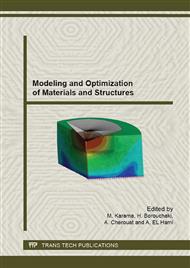[1]
R.J. Rioja and J. Liu: Metall Mater Trans A Vol. 43A (2012), p.3325.
Google Scholar
[2]
A. Heinz, A. Haszler, C. Keidel, S. Moldenhauer, R. Benedictus and W.S. Miller: Mater Sci Eng A Vol. A280 (2000), p.102.
Google Scholar
[3]
P. Lequeu, P. Lassince and T. Warner: Adv. Mater. Proc. Vol. 165 (2007), p.41.
Google Scholar
[4]
L. Lin, Z. Zheng and J. Li: Rare Metal. Mater. Eng. Vol. 41 (2012), p.1004.
Google Scholar
[5]
H.F. Zhang, Z.Q. Zheng, S. Zhong, X.F. Luo and J. Zhong: Chin. J. of Nonferrous Met. Vol. 22 (2012), p.1025.
Google Scholar
[6]
K. Jin, Y.L. Deng, L. Zhou, L. Wan and X.M. Zhang: J. of Aeron. Mater. Vol. 31 (2011), p.18.
Google Scholar
[7]
H. Zhang, Z. Zheng, Y. Lin, X. Luo and J. Zhong: J. Mater. Sci. Vol. 47 (2012), p.4101.
Google Scholar
[8]
L. She, Z. Zheng, S. Zhong, Q. Wu and H. Li: Rare Metal. Mater. Eng. Vol. 41 (2012), p.1201.
Google Scholar
[9]
T.F. Morgeneyer, M.J. Starink and I. Sinclair: Mater. Sci. Forum Vol. 519-521 (2006), p.1023.
Google Scholar
[10]
TF. Morgeneyer, M. J Starink, S.C. Wang and I. Sinclair: Acta Mater. Vol. 56 (2008), p.2872.
Google Scholar
[11]
N.D. Alexopoulos, E. Migklis, A. Stylianos and D.P. Myriounis: Int. J. Fatigue Vol. 56 (2013), p.95.
Google Scholar
[12]
C. Bitondo, U. Prisco, A. Squillace, G. Giorleo, P. Buonadonna, G. Dionoro and G. Campanile: Int J Mater Form Vol. 3 (2010), p.1079.
DOI: 10.1007/s12289-010-0958-y
Google Scholar
[13]
A. Astarita, A. Squillace, A. Scala and A. Prisco: J Mater Eng Perf Vol. 21 (2012), p.1763.
Google Scholar
[14]
J. Chen, Y. Madi, T.F. Morgeneyer and J. Besson: Comp Mater Sci Vol. 50 (2011), p.1365.
Google Scholar
[15]
L.P. Borrego, L.M. Abreu, J.M. Costa and J.M. Ferreira, Eng. Fail. Analysis Vol. 11 (2004), p.715.
Google Scholar
[16]
P. Mazal and P. Liskutin In proceedings of the 23rd International Conference on Metallurgy and Materials (METAL 2014) May 21st - 23rd.
Google Scholar
[17]
D. Jisa, P. Liskutin, T. Kruml and J. Polak: Int. J Fatigue Vol. 32 (2010), p. (1913).
Google Scholar
[18]
G. Mesmacque, A. Amrouche and X. Decoopman: Mater. Sci. Eng. A Vol. A497 (2008), p.51.
Google Scholar
[19]
P.M.G.P. Moreira, V. Richter-Trummer and P.M.S.T. de Castro in: Multiscale Fatigue Crack Initiation and Propagation of Engineering Materials: Structural Integrity and Microstructural Worthiness - Fatigue Crack Growth Behaviour of Small and Large Bodies, edited by G. Sih, Vol. 152, Springer Science (2008).
DOI: 10.1007/978-1-4020-8520-8_5
Google Scholar


